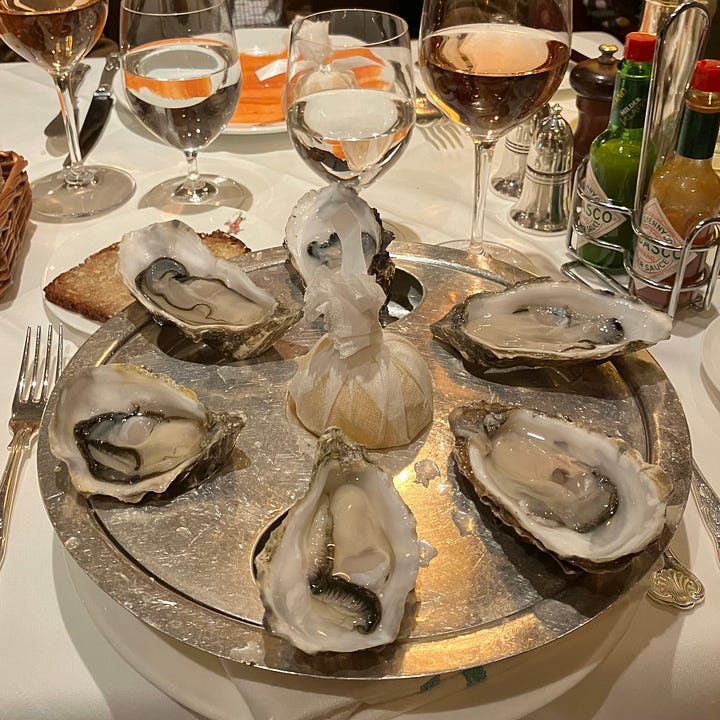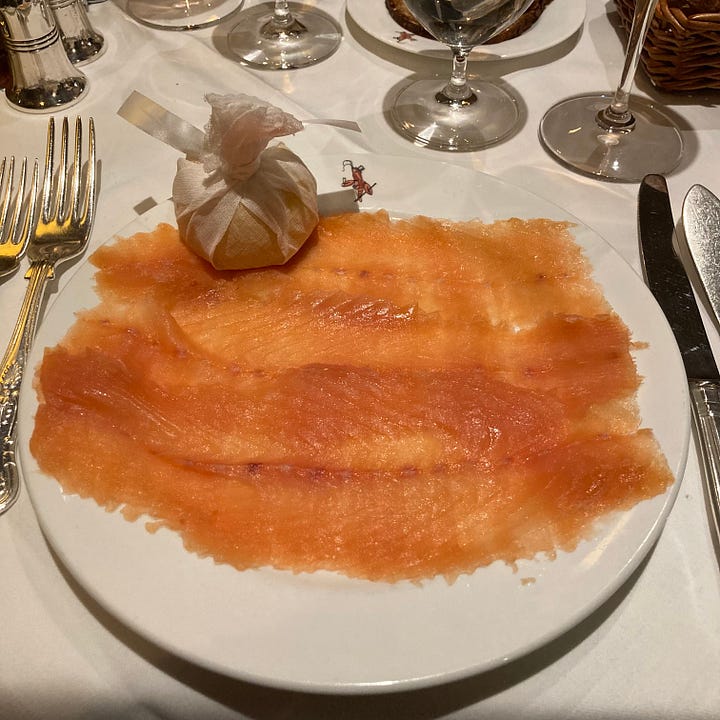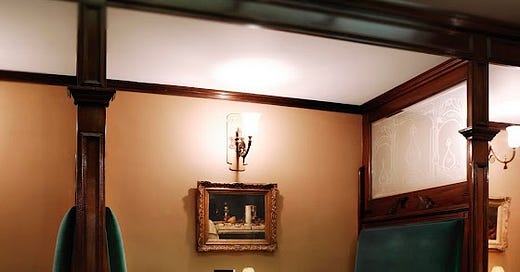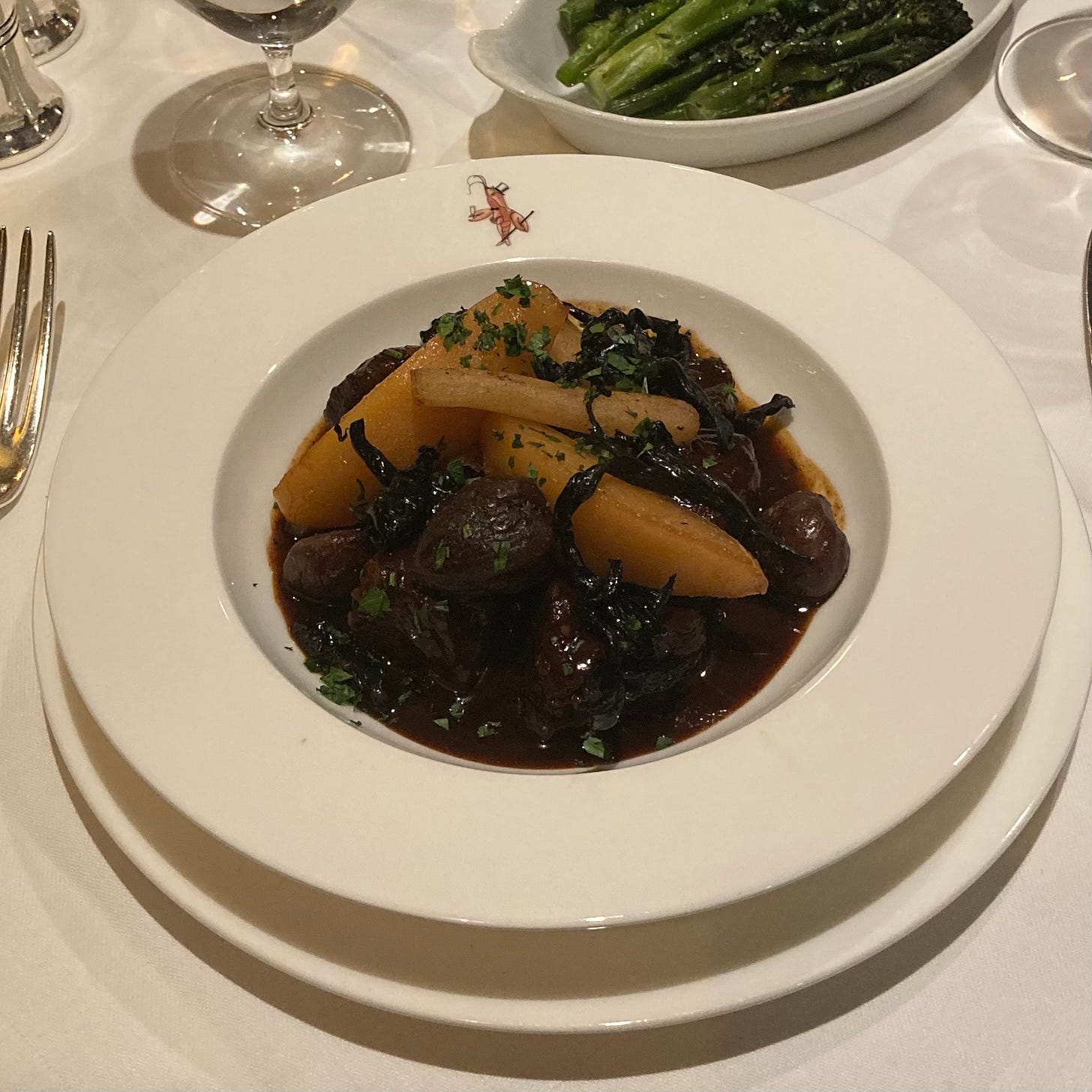Stepping into Wiltons is like walking into a private members’ club in St James’s. Gilded landscape paintings and portraits of important looking men are interrupted only by dark wood, white table linen, low-lit table lamps, and genial but stern staff who glide silently between them, acknowledging you with an indiscernible, all-knowing nod.
The busy, maximalist backdrop is soothed by the rouge and forest green velvet chairs, which look like they’ve been there for time immemorial and you sink in and drink in the rich traditions of a dining room of a gentlemen’s club that has been plucked out and plonked on Jermyn Street.
But it wears its history casually, and without fuss, and you wouldn’t suspect the original George William Wilton opened this establishment as a shellfish mongers in 1742. Now a fine-dining restaurant serving mostly game and fish, Wiltons aims to deliver superbly cooked, traditional dishes with a matching quality in service.
Gap-year waiters and student-servers are nowhere to be seen. Courteous staff serve you from the correct side with care and a genuine interest for the diners’ welfare. One oddity was that whilst the men wore tails, the women wore green maid outfits, and all looked to be around the five-foot mark, giving the impression that you were being asked what you wanted to drink by small but incredibly professional school children.


Mrs B. and I are particularly enjoying rosé at the moment, and so although we’re still in winter, we’re invariably drinking summer wines. Pictured above and accompanying the wine are Mrs B.’s Irish Rock Oysters, displayed magnificently on a silver platter, as well as my smoked salmon with half a lemon in a muslin cover. Said muslin covers are quickly becoming my favourite innovation for a fishy dish - I don’t know why, but it makes me smug to squeeze out the lemon and see the juice pour delicately and precisely through the cloth without a drop on my hands or splattered violently in twelve different directions.
It tasted incredible. Each slice of salmon was thin but firm, and the first mouthful made my tongue tingle with the smoky flavour combing with the sharp lemon, and it forced me to stop and think from what glorious sea it came.
Up next was something unfamiliar - slow braised venison with chestnuts, quince and salsify. The venison was tender and gamey - predictably good; the chestnuts soft - surprisingly nice; the sauce - deep and rich; but the real star of the show was the quince - the thick yellow slices draped across the dish above.
I’ve only ever had quince as a jelly, the jewel in the crown of cheese and biscuits. Light and sugary, it forms a perfect base on a cracker, over which a soft blue cheese matches it with satisfying intensity. I have never, however, had quince in a main course. Presumably poached in sugary water before slicing, this quince gave a sweet but not overwhelming contrast to the deeply rich and filling dish it found itself with. By the end, I was skewering every part of the meal together like a kebab - venison-chestnut-sauce-quince- and enjoyed it like I would cheese and biscuits with one layer adding and benefiting the next.
Before walking out the door and into the darkening night, a chocolate digestif with a caramel core appeared in a tiny ramekin, dwarfed by the now-barren white linen table cloth. It was obviously delicious. Turning around, I could see the restaurant was filling up again for the next round of guests, and the gilded paintings, dark wooden panels, and gliding waiters looked unshaken by the challenge. George Wilton might not recognise his legacy, but I think he would have enjoyed it.




